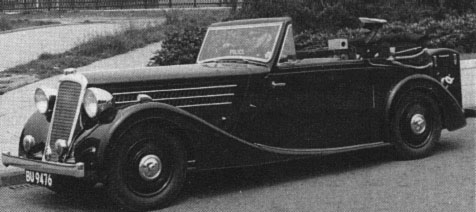A Kinross Advert For Standard Motor Cars, cir 1936
|
The Flying Standard
BRITAIN'S WONDERFUL NEW CAR
Seats six in comfort within the wheelbase. Brilliant
Performance. Economical to run. 70 to 80 m.p.h.
according to model. Most luxurious equipment.
D.W.S. Permanent Jacking System. Two compart-
ment locker in tail.
Telescopic Steering Column. Low running cost.
Britain's most beautiful and roomiest car at the price.
FLYING STANDARD 12 H.P. 4-CYL., £259
16 H.P. 6-CYL., £299
20 H.P. 6-CYL., £315
COME FOR A THRILLING TRIAL RUN TO-
WM. KINROSS & SONS
Established 1802. Appointed Makers to the Queen 1838.
PORT STREET : Standard Agents : STIRLING
Phone 309. Grams, 'Kinross'
Models made by J.Ivester Lloyd, of Linsdale, Leighton Buzzard.
|
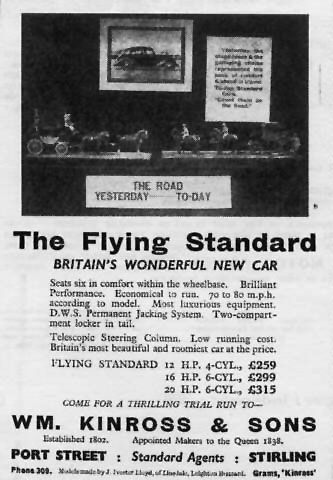 |
Yesterday, the
stagecoach & the
galloping chaise
represented the
peek of comfort
& speed to travel.
To-day, Standard
Cars.
“Count them on
the Road”
|
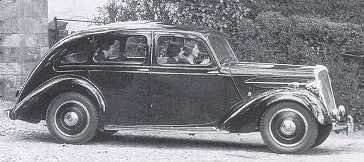 |
| Standard Flying Twelve |
This range of sidevalve 12hp, 16hp and 20hp Flying Standards was part
of the Standard model line-up launched in autumn 1935 for the start of 1936, the Flying Sixteen
and Flying Twenty having six cylinders. Later in October 1936 the 20hp Flying Twenty V8 was introduced
with a waterfall grille. The Flying Standard represented the high point of contemporary
fashion in car design, in the era of streamlining. Standard Motor Cars were made at
their, now demolished, factory at Canley in Coventry. The general manager of Canley
responsible for the introduction of the Flying Standard was the temperamental Captain John
Black. He was renowned as the most generous employer in the motor industry, offering
his workers higher wages and better fringe benefits than any competitor; unkind critics
claimed he bribed his workforce. During the 1930s, Standard cars were always just
a little upmarket from Austin and Morris in terms of specification and price. The
Standard chassis was used by specialist coachbuilders: Swallows produced the SS designed by William Lyons with the
first Jaguar being introduced in 1936.
This is a photo of an Avon bodied Standard in Drop Head Coupé form;
unfortunately none survive. Standard introduced their own DHC Flying Standards
for 1937, but these were not built with the Flying Twenty model. The stern looking
police officer in the back looks as if he is operating an early form of speed trap device.
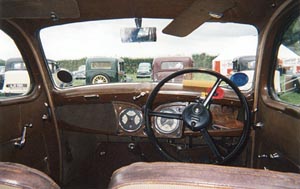 |
| The interior of a 1936 Flying 12 |
In 1938 all the Flying Standards were fitted with the new waterfall
grille, and in October independant front suspension was introduced. The Flying
Standards were continued up until 1939 when WWII brought on the production of utility
vans, pickups and ambulances. After the war production of the smaller cars resumed
without the Flying Standard name, until the Standard Vanguard was launched in 1947.
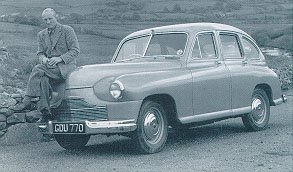 |
| Sir John Black on a Standard Vanguard |
For more information on Standard Motor Cars please visit the following sites:


